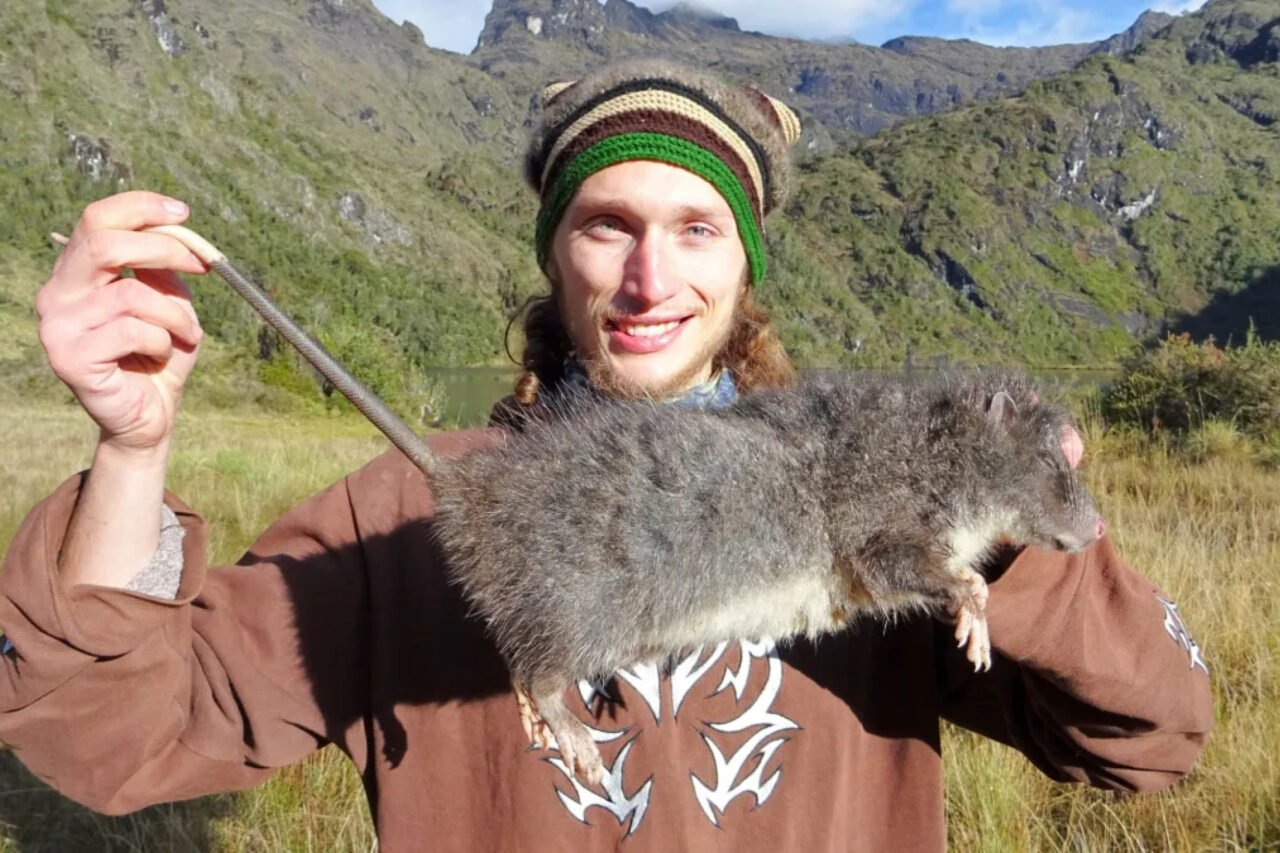A remarkable rediscovery in the world of wildlife has taken place in New Guinea, where the giant woolly rat, scientifically known as Mallmys istapantap, has been confirmed to exist after being thought lost for over 30 years. In a groundbreaking paper published in April 2023 in the journal Mammalia, Czech researcher František Vejmělka shared the first photographs of this elusive species, shedding light on its existence and habitat.
The giant woolly rat had been registered in 1989 based solely on archived data and skull collections from museums. For decades, there was no visual confirmation of its existence, leading to skepticism among researchers regarding its survival in the wild. Vejmělka’s research, however, confirms that the woolly rat is indeed thriving in its natural environment.
A Challenging Expedition
Vejmělka’s expedition to discover the woolly rat was fraught with challenges. He emphasized the critical role played by local indigenous hunters, who guided him through the dense rainforests of Mount Wilhelm, a peak that reaches nearly 15,000 feet (4,509 meters) and is known for its rugged terrain and lack of established hiking trails. The region is home to several indigenous tribes, who were initially cautious about allowing outsiders into their territory.
Collaborating with local hunters, Vejmělka was able to join their night hunts, which ultimately led to the successful sighting and capture of the woolly rat. Locally known as “mosak,” or “man-biter,” this nocturnal species is notable for its size and unique adaptations.
New Insights into the Woolly Rat
The findings from Vejmělka’s research provide essential insights into the woolly rat’s diet, behavior, and lifestyle. The species can grow up to 3 feet (85 centimeters) long and weigh nearly 5 pounds (2 kilograms). Known for its nocturnal habits, the woolly rat climbs trees to forage on various plants using its sharp claws.
In addition to documenting this fascinating creature, Vejmělka and his team collected data on 61 species of non-flying mammals native to the region. Their research raises important questions about the perceived rarity of the woolly rat, suggesting that its limited visibility in scientific collections may be due more to the remoteness of its habitat than to its actual population status.
Vejmělka concluded that the reliability of detecting the species locally challenges previous assumptions about its scarcity. He stated, “Field expeditions are truly critical; the more we doubt the persistence of a certain species—not just for this particular rat—how much more is there to discover about the biodiversity of tropical mountains?”
This rediscovery underscores the importance of field research in understanding biodiversity and highlights the need for continued exploration of remote ecosystems. As Vejmělka’s findings demonstrate, there are still many secrets waiting to be uncovered in the rich tapestry of wildlife around the world.






































































